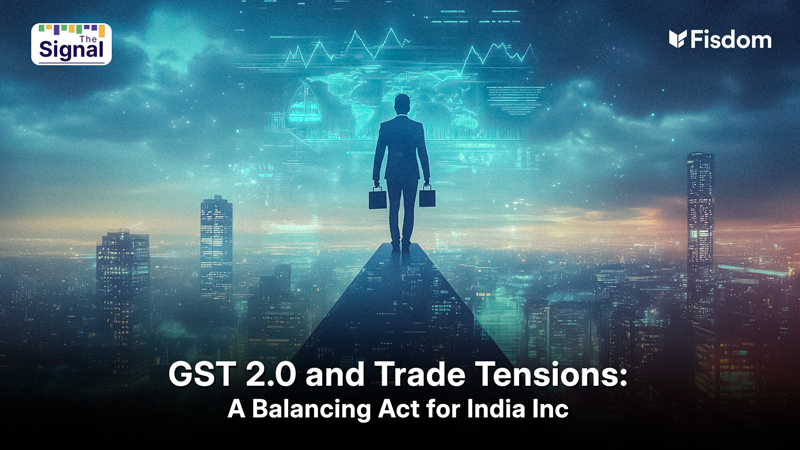
The Indian stock market has experienced a wobble recently, with benchmark indices such as the Sensex and Nifty posting marginal declines. The Reserve Bank of India’s (RBI) decision to maintain the repo rate at 6.5%, while shifting its stance to “neutral,” did little to lift market sentiment. This development has left investors wondering: Is this just a temporary dip, or are we headed for a more prolonged and deeper correction?
Market Resilience Amid Challenges
Since the COVID-19 pandemic, Indian equities have displayed remarkable resilience compared to most emerging and developed markets. Over the past year, the BSE Sensex has rallied by 23%, and the NSE Nifty 50 has posted a 28% gain, despite facing a barrage of challenges, including domestic inflationary pressures, elevated interest rates, and geopolitical risks.
This resilience has been driven by multiple factors. Public sector investments and infrastructure spending have been key drivers of growth, while foreign portfolio investments (FPIs) have provided a consistent inflow of funds into the market. Despite these positive factors, questions are now being raised about whether this rally is sustainable, especially with concerns around stretched valuations.
Are Valuations Overstretched?
One of the most pressing concerns for market participants is the possibility that equity valuations are now overstretched. At present, the Nifty 50 trades at a 12-month forward estimated price-to-earnings (PE) ratio of about 21.5, which is above its decadal average. Additionally, the market capitalization (MCap) to gross domestic product (GDP) ratio — a key measure of equity valuation in relation to economic growth — is currently at 132% for FY2024, indicating that the market may be overheated.
Typically, a MCap-to-GDP ratio of 50-75% is considered modestly undervalued, while 75-90% is fairly valued, and 90-115% is modestly overvalued. The current ratio of 132% suggests a disconnect between equity market performance and the underlying economic growth. In fact, this ratio is expected to rise to 146% by the end of FY2025, nearing the levels seen during the Global Financial Crisis (GFC) in 2007 when the ratio peaked at 149%. Following the GFC, the ratio plummeted to 56% as the crisis unfolded, leading to a severe market correction.
What’s Driving the Disconnect?
There is no doubt that the Indian economy is growing, but the growth rate has not matched the stellar performance of its stock market. Much of the economic growth has been driven by government initiatives and public sector investments. However, private sector investment remains sluggish, and the much-needed consumption-driven growth has not yet materialized across the board.
A critical factor to consider is the state of the global economy. Geopolitical risks, including the ongoing conflict in the Middle East and concerns over inflation in developed markets, have caused volatility in global financial markets. Moreover, foreign investors may start rebalancing their portfolios towards other markets, such as China, where valuations are more attractive following the recent stimulus measures by the Chinese government.
Is This a Temporary Dip?
While the concerns around overvaluation are valid, it’s essential to consider whether the current market correction is just a temporary dip or something more significant. If we look at historical trends, the Indian stock market has been remarkably resilient. The post-COVID bull market has witnessed a maximum drawdown of only 7%, even during periods of high volatility. At present, the market is down by about 5% from its recent highs.
This observation is supported by the fact that significant amounts of cash are waiting to be deployed into the market. According to reports, foreign institutional investors (FIIs) may have pulled out Rs 32,000 crores from Indian equities to invest in China or in response to global geopolitical risks. However, domestic mutual funds have been holding onto a substantial cash pile, estimated at Rs 1.86 lakh crore as of August. Additionally, high net worth individuals (HNIs) and portfolio managers are sitting on cash, waiting to buy on dips.
Given this backdrop, the current dip may not last long. The large cash holdings by domestic institutions and mutual funds are likely to be deployed into the market once valuations become more reasonable, resulting in a potential recovery in the near term.
Key Factors for Investors to Consider
For investors, the key question is whether this correction is deep enough to warrant concern or if it presents a buying opportunity. There are several factors to consider:
- Valuation Levels: The current MCap-to-GDP ratio suggests that the market is overvalued in relation to the economy’s growth. Investors need to be cautious about entering the market at these elevated levels, especially without clear signs of an uptick in GDP growth.
- Economic Fundamentals: While public sector investments and infrastructure spending are driving growth, the private sector’s contribution remains subdued. Investors should look for signs of broader-based consumption growth before committing heavily to equity markets.
- Liquidity in the System: The large cash holdings by mutual funds, PMS managers, and HNIs suggest that there is ample liquidity waiting to be deployed into the market. This liquidity can provide a cushion to the market, preventing any major downside.
- Geopolitical Risks: Global geopolitical tensions, particularly in the Middle East, continue to pose risks to global markets. Any escalation in these tensions could trigger a sell-off in risk assets, including Indian equities.
- Global Interest Rate Movements: The U.S. Federal Reserve’s hawkish tone on interest rates has been a cause for concern. If rates continue to remain elevated, it could dampen the flow of foreign funds into Indian markets, adding further pressure on equity valuations.
Conclusion
The current correction in Indian equities may appear alarming, but historical trends suggest that the market is likely to stabilize in the near term. With significant cash waiting on the sidelines and a strong domestic investment base, a recovery could be on the cards. However, investors should remain cautious about overvaluation concerns and pay close attention to broader economic indicators before making any significant investment decisions.
Market this week
| 07th Oct 2024 (Open) | 11th Oct 2024 (Close) | %Change | |
| Nifty 50 | ₹ 25,084 | ₹ 24,964 | -0.5% |
| Sensex | ₹ 81,927 | ₹ 81,381 | -0.7% |
Source: BSE and NSE
- The market ended lower for the second consecutive week in a volatile session, impacted by rising geopolitical tensions, weak quarterly earnings projections, and continued selling by FIIs.
- Sectoral performance was mixed: Nifty Pharma and Auto indices rose by 2% each, Nifty IT index gained 1%, and Nifty Realty increased nearly 1%.
- On the downside, Nifty FMCG index declined by 2%, while Nifty Metal and PSU Bank fell 1.5% each.
- FIIs extended their selling spree, offloading equities worth Rs 27,674.99 crore during the week, while DIIs countered with purchases amounting to Rs 31,363.61 crore.
Weekly Leaderboard
| NSE Top Gainers | NSE Top Losers | ||||
| Stock | Change (%) | Stock | Change (%) | ||
| Trent Ltd | ▲ | 11.99 % | Titan | ▼ | (5.33) % |
| Kotak Mahindra Bank | ▲ | 4.06 % | Britannia Ind | ▼ | (3.67) % |
| M&M | ▲ | 3.87 % | TATA Steel | ▼ | (3.65) % |
| HCL Technologies | ▲ | 3.55 % | SBI Life Insurance | ▼ | (3.51) % |
| Bharat Electronics | ▲ | 3.14 % | Nestle India | ▼ | (3.32) % |
Source: BSE
Stocks that made the news this week:
- HCLTech is set to announce its Q2FY25 results on October 14, with analysts expecting a sequential revenue rise but a potential dip in net profit. The decline in profit is anticipated due to sluggish growth in the software business, the absence of revenue from the divested State Street BPO, and a likely normalization of other income.
- The Indian primary market is gearing up for a historic week starting October 14, with Hyundai Motor India’s highly anticipated Rs 27,870-crore IPO set to launch, along with two other public issues. This would surpass the previous record set by LIC’s Rs 21,008-crore IPO in 2022. Experts predict a busy IPO market ahead as companies seek growth capital amid an improving economy supported by government initiatives.
- Metal stocks were active again, with companies like NALCO, Hindalco, NMDC, SAIL, and MOIL gaining 2-3.5% on hopes of further stimulus from China. Other names such as Coal India, Vedanta, Tata Steel, and JSW Steel also performed well, lifting the Nifty Metal index by around 1% despite weak overall market sentiment. This follows earlier profit booking when China’s state planner withheld details on new stimulus measures for its struggling property sector.














